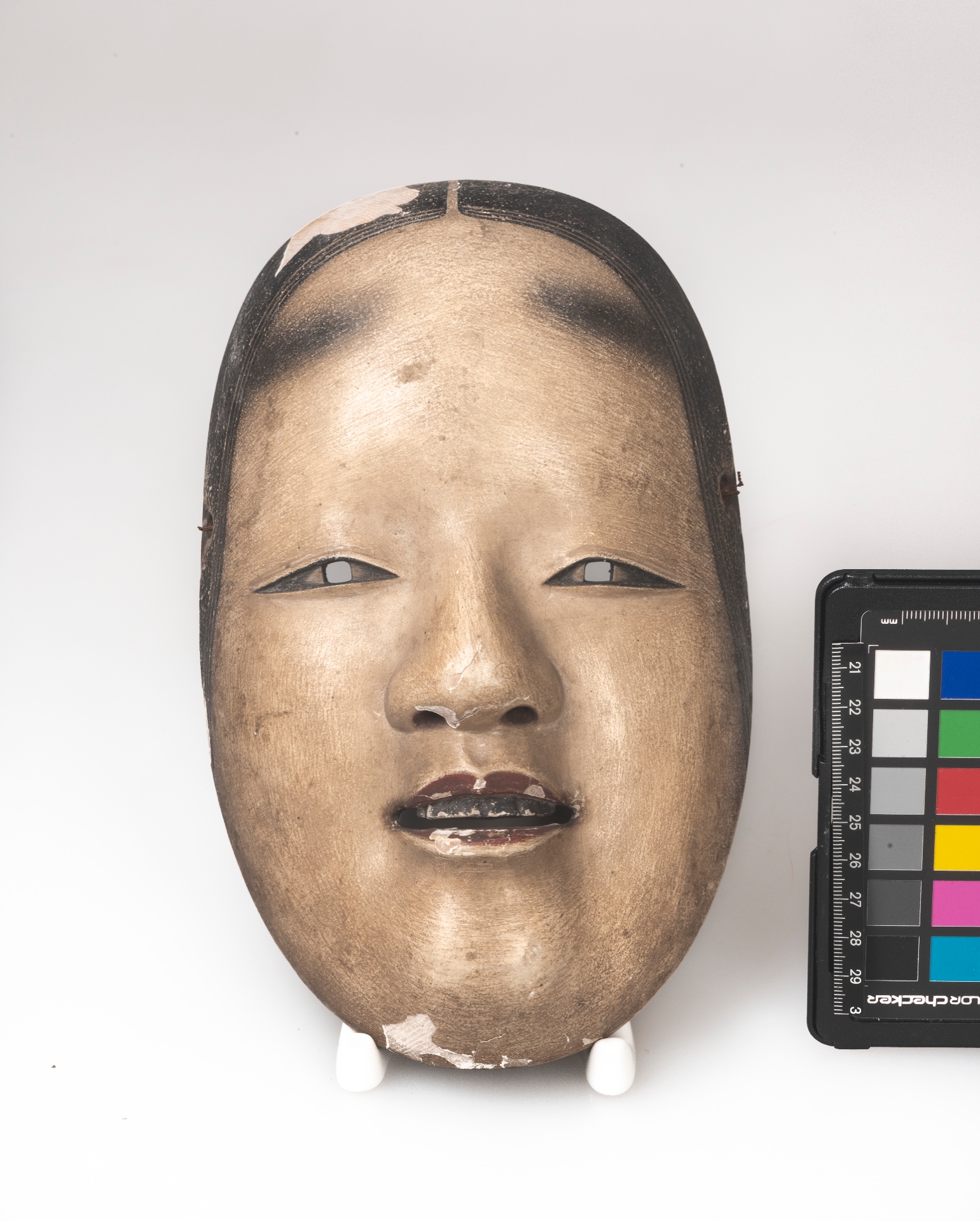Technological Research and Conservation of Japanese Masks of the Noh Theatre (Part II)

Starting from 2018, the Hermitage Laboratory for Scientific Restoration of Objects Made of Organic Materials has been working on a large collection from the museum’s Oriental Department: Japanese theatrical masks. The total number of masks in the collection is over 100 pieces, and all of them require conservation treatment.
Historical reference
Masks of the Japanese Noh theatre are unique for the world of Oriental theatre masks. They are simple yet elegant, and very accurately convey facial features of people of different ages and face types. They are commonly carved from blocks of Japanese cypress, a kind of wood which is durable and at the same time easy to carve. Usually these masks were relatively small in size, resonating with the esthetic ideals of the era in which they were created: a small head in combination with a large body was regarded as elegant.
Until the 17th century, masks for the Noh theater were carved by the actors themselves, by monks or by sculptors. Starting from the 17th century on, they are manufactured by several Noh families, passing down craftsmanship from generation to generation.
State of preservation of the masks in the collection varies significantly from minor abrasions to massive losses and exfoliation of the ground. In almost all masks, the wooden base has shrunk, leading to layers’ separation and loss of the upper layer. Abrasions of paint on the protruding parts near the lacing holes and moisture stains prove that the masks were in constant use. Areas that were in need of regular repair show evidence of repeated deterioration: detachment of ground from the base, exfoliations, abrasions and losses of paint. Metal inlays in the eyes and tufts of hair are either loose or missing.
The main task for the restorers is general conservation and stabilization of all masks. As the mask’s surface is not covered by any protective layer, dust and dirt lie immediately on top of the water-soluble paint which threatens its future preservation.
Necessary restoration treatment includes:
- Technological research: study of technological layers under a microscope, getting micro sections, photographing of fragments under a microscope.
- Conservation treatment: removing surface dirt, reinforcing the ground and paint layers, filling in losses, retouchings.
- Publication of article based on the results of research and restoration work.
As soon as the restoration of the whole collection is complete, a temporary exhibition presenting the results of the project is planned.
Restoration works will be implemented by the specialists of the Laboratory for Scientific Restoration of Objects Made of Organic Materials.





